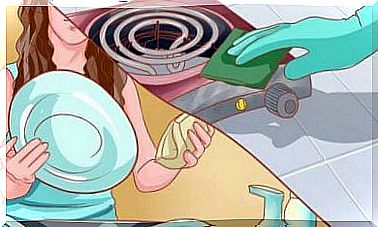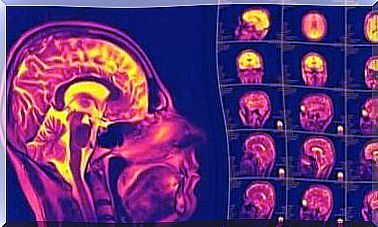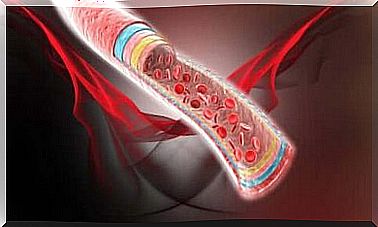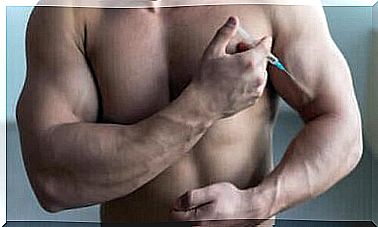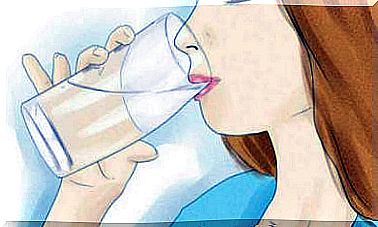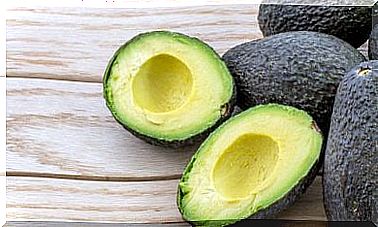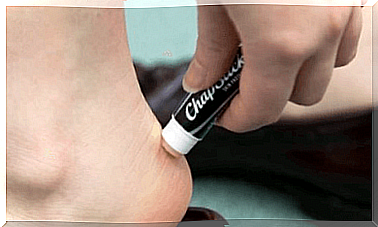What Is Dry Needling And Is It Effective?
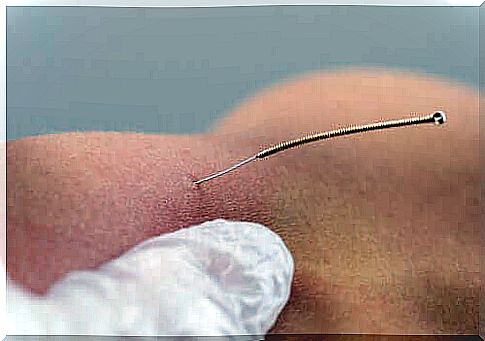
Dry needling is one of the many new, innovative techniques in the field of physiotherapy. This is a new scientifically based type of therapy technique to reduce muscle pain.
Today you will learn more about it, along with its usefulness as a treatment for all kinds of muscle problems. To understand what dry needling is and how it works, before we go any further, we need to clarify two concepts: trigger point and myofascial pain.
trigger point
These are hyperirritable points within a tight band of a particular muscle. This tight band is a group of muscle fibers that exhibit abnormal tension and form a very consistent band. This is commonly called a contraction.
This tight band is painful and the trigger point is a lump that, when touched, leads to the kind of sharp pain that makes one flinch. This pain also radiates to other areas that do not contain the trigger point: radiating pain.
It can occur together with motor disturbances and other symptoms such as dizziness and nausea. A muscle’s trigger points usually radiate to certain areas and provide a clue to physical therapists as to where the problem is coming from.
For example, headaches can come from a trigger point in muscles such as the upper trapezius, shoulder blade lifter or sternocleidomastoid. This pain may have nothing to do with the area it originated from and the trigger points may be active or latent.
An active trigger point therefore means that it radiates pain to other areas of the body. On the other hand, if it is latent, then it means that it is not radiating pain.
Trigger points can be activated by acute or chronic muscle overload, direct trauma and cooling. The most common trigger is usually chronic overexertion due to postural problems.
Myofascial Pain

This type of pain is a regional muscle process that can be either acute or chronic. It is disabling and common among the population, but not many people know about it.
It is not usually associated with changes in imaging or analytical tests and therefore it is underdiagnosed and undertreated. The symptoms of myofascial pain caused by a trigger point are:
- Sensitive symptoms. There is a change in the sense of touch. For example, you are hit by something that normally doesn’t hurt, and yet you feel pain. There will additionally be a radiating pain (explained above).
- Motor symptoms. Among other things, there is a decrease in strength and difficulty in moving the affected muscle.
- Autonomic symptoms. There is a cold, tearing, lots of saliva, temperature changes, sweating, piloerection (goosebumps), dizziness, nausea and redness on the skin.
We could say that there are three components in myofascial pain:
- A palpable tight band in the affected skeletal muscle or contraction.
- A trigger point.
- A characteristic pattern of radiating pain, the trigger point that leads to pain in a particular area.
The goal of dry needling
Dry needling is a physiotherapeutic technique mainly used for myofascial pain (Spanish link). Once the practitioner has found the trigger point that causes it, he must deactivate it using a needle. The latter is similar to the acupuncture needle, but is longer, as it has to reach the muscle.
The whole process requires cleaning of the area and the physical therapist must use gloves, disinfectants and bandages. This is because the dry spot is a semi-invasive technique that goes through the patient’s skin. The needles are also supplied in unit packs and are not reusable.
The practitioner inserts a needle into the trigger point without anesthesia and moves from the inside out until the patient experiences a localized spasm, an involuntary contraction of the muscle.
They do this without actually pulling the needle out of the skin. The puncture of the muscle stimulates the muscle receptor, causing relaxation after the spasm, increasing elasticity and decreasing pain in the area.
Is dry needling the same as acupuncture?
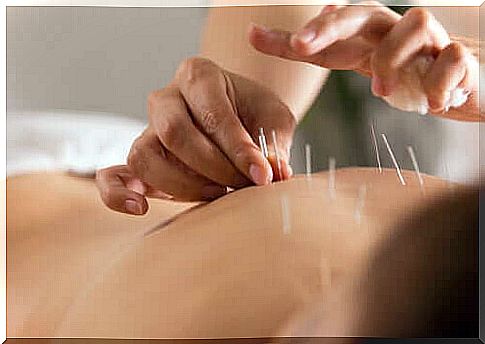
Dry needling is a scientific technique in which a trained physical therapist punctures the muscle to manage myofascial pain. It lasts between 2 and 5 minutes and can be painful.
On the other hand, acupuncture is based on traditional Chinese medicine and it only pierces the energy points on a superficial level, without coming into contact with the muscle.
An acupuncture session lasts about 20 minutes, it is not painful, it can treat many conditions and is performed by a trained therapist.
The risks of dry needling
These are minimal, but most can be avoided with appropriate precautions and when performed by a properly trained physical therapist:
- The needle goes through the skin and into the muscle and there may be small blood vessels between them. The most common risk of dry needling is piercing a vessel and causing a small bruise, which lasts for about a day. This risk is more common in patients taking anticoagulants, whose blood is thinner.
- The therapist could pinch off a nerve branch on the way to the muscle. This causes tingling, but it usually goes away right after.
- Another less common risk is dizziness, it can occur during the procedure. The technical term for it is ‘vasovagal’ reaction.
- Few cases have been reported, but if the physical therapist is not experienced in dry punctures of the chest muscles, a mistake can lead to a pneumothorax (collapsed lung).
- There may be swelling or contraction of the muscles.
- It can also lead to dermatitis after the puncture, a skin reaction in the puncture area.
- Finally, any puncture carries a risk of infection if the doctor in the area does not take proper cleaning measures. This is also the case if the physiotherapist does not use gloves and/or sterile needles.
Dry needling can give you a feeling similar to the feeling you get after receiving a very intense massage. However, it disappears after 1 or 2 days.
Contraindications of dry needling
Most contraindications of dry needling treatment are relative. Among the contraindications of dry needling can be found the following:
- An insurmountable fear of needles.
- Clotting problems and anticoagulant treatment due to the risk of bleeding.
- People with weak immune systems have a higher risk of developing infections.
- Lymphadenectomized people at risk for lymphedema (this means the dry needle area is filling with fluid that cannot be filtered because the lymph nodes in the area are no longer present.)
- Hypothyroidism increases the risk of muscle inflammation.
Is dry needling effective?
According to various study reviews, dry needling is effective for a number of different complaints of the body. It is effective for, among other things:
- Reducing subjective and objective pain locally as well as referred pain and pain at the pressure of the trigger points.
- Improving the mobility of the joints related to the muscle that houses the trigger point.
- There is insufficient evidence, but it appears that dry needling may improve depression in patients with myofascial pain.
Finally , doctors noted that certain things can affect the effectiveness of dry needling. Consider, for example, other factors in patients, such as prolonged pain, lack of sleep and repetitive muscle work.
